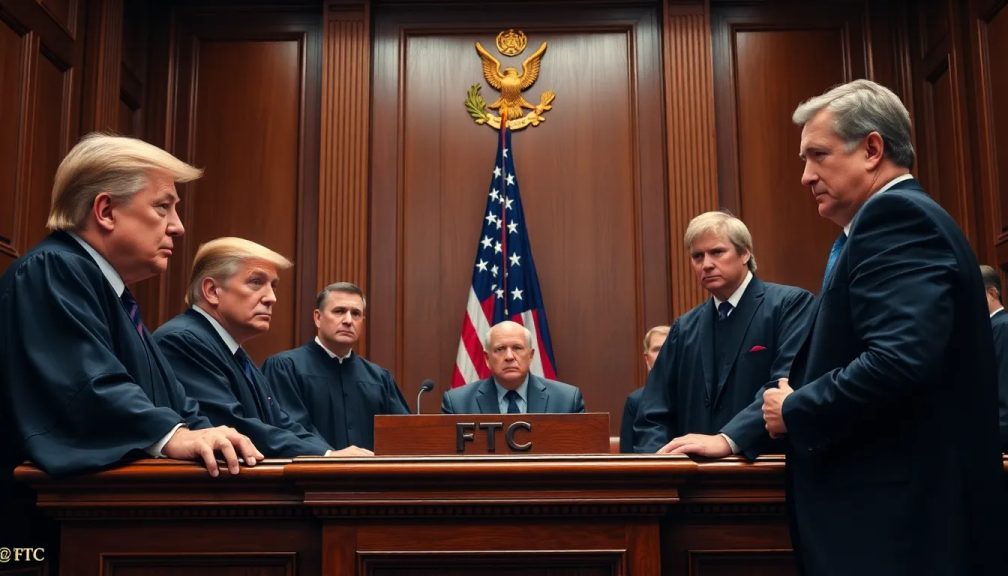Supreme Court allows Trump to dismiss FTC Democrat despite precedent

The recent ruling from the Supreme Court regarding the authority of the President over independent agencies like the Federal Trade Commission (FTC) marks a significant shift in the legal landscape of American governance. This decision raises questions not only about the power dynamics within the government but also about the future of checks and balances that have been in place for nearly a century. Understanding the implications of this ruling is crucial for those interested in the evolution of executive power in the United States.
Supreme Court ruling on FTC commissioner removal
On September 8, the Supreme Court ruled in favor of President Trump, allowing him to dismiss a Democratic member of the FTC, specifically Commissioner Rebecca Kelly Slaughter. This decision came despite the long-standing legal precedent established in 1935 with the case Humphrey's Executor v. United States, which held that the President could only remove FTC commissioners for specific reasons such as inefficiency, neglect of duty, or malfeasance.
Trump's decision to fire Slaughter was framed as a necessary action to align the FTC's priorities with those of his administration. The notice of termination explicitly stated that her continued role was "inconsistent with my administration's priorities," indicating a direct challenge to the historical precedent that has governed such removals.
Three weeks prior, an appeals court had reinstated Slaughter, emphasizing that the government had a low probability of success in reversing that decision based on existing Supreme Court rulings. However, the Supreme Court's Chief Justice John Roberts intervened to grant a temporary stay on this lower court's ruling, effectively keeping Slaughter from returning to her post.
Implications of the Supreme Court's decision
This case is set to be heard in the December 2025 session, where the court will consider two pivotal questions:
- Whether the statutory removal protections for members of the FTC violate the separation of powers established by the Constitution.
- Whether federal courts can prevent a person's removal from public office, either through equitable relief or legal channels.
The outcome of this case could have far-reaching implications for the balance of power among the branches of the U.S. government. If the Supreme Court decides to overturn Humphrey's Executor, it could pave the way for increased executive control over independent agencies, potentially undermining their ability to operate free from political pressure.
Kagan's dissent and concerns about executive overreach
Justice Elena Kagan issued a poignant dissent, joined by Justices Ketanji Brown Jackson and Sonia Sotomayor. In her dissent, Kagan expressed concern that the majority's decision reflects a troubling trend: using the court's emergency docket to enable what existing precedent explicitly prohibits. She argued that this ruling effectively transfers authority from Congress to the President, thereby reshaping the fundamental principles of separation of powers that are supposed to govern the U.S. federal system.
Kagan's dissent raises critical questions about the future of independent agencies, which are designed to operate with a degree of autonomy from political pressures. She warned that allowing the President to unilaterally fire commissioners could lead to a loss of accountability and transparency in these institutions, undermining their ability to fulfill their regulatory roles.
The historical context of FTC commissioner removals
The Federal Trade Commission was established in 1914 as a response to concerns about monopolistic practices and unfair business competition. The Humphrey's Executor ruling was pivotal in establishing that members of this independent body could not be removed at will by the President. This legal framework was designed to ensure that the agency could operate impartially, without succumbing to political whims.
Over the decades, the protections afforded to FTC commissioners have served as a bulwark against political interference. However, recent events suggest a shift in how these protections are interpreted, raising concerns about the future of independent regulatory agencies in the United States.
Potential consequences for independent agencies
If the Supreme Court ultimately decides to side with the Trump administration and overturn the precedent, several consequences may arise:
- Increased executive control: The President could remove commissioners for any reason, leading to potential political manipulation of regulatory agencies.
- Loss of impartiality: Independent agencies may become less effective in their roles if they are subject to political pressures.
- Public distrust: An erosion of trust in regulatory bodies could result from perceived political interference, leading to a lack of confidence in their decisions.
- Impact on future administrations: Subsequent Presidents may use this precedent to further consolidate power over independent agencies.
This evolving legal situation highlights the ongoing tension between executive power and the independence of regulatory agencies, which serve as vital checks on corporate and governmental power.
Broader implications for the separation of powers
The Supreme Court's decision regarding the FTC could symbolize a broader trend towards executive overreach in American politics. As the court deliberates on this case, it is crucial to consider the implications for the overall structure of governance in the United States.
This ruling may set a precedent that affects not only the FTC but also other independent agencies, such as the Federal Communications Commission (FCC) and the Securities and Exchange Commission (SEC). The balance of power among the legislative, executive, and judicial branches could be fundamentally altered, reshaping the landscape of American governance.
As this case unfolds, observers will be keenly watching the implications it holds for the future of American democracy and the foundational principle of checks and balances that underpins it.
For further insights, you can watch this informative video on the topic:




Leave a Reply